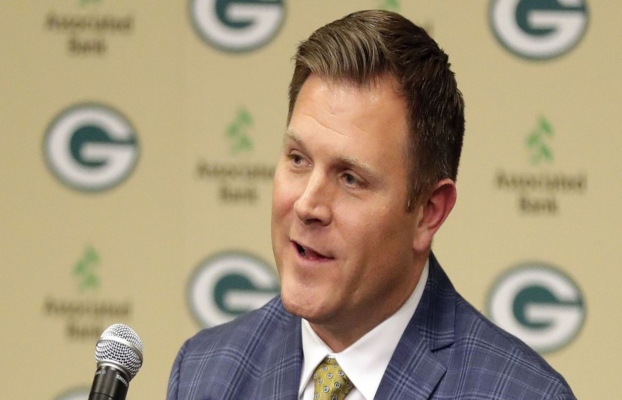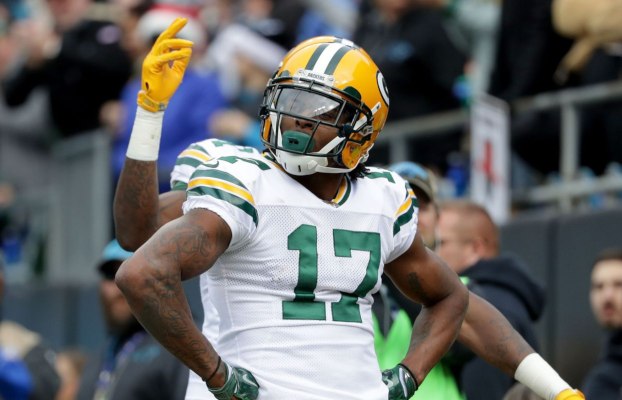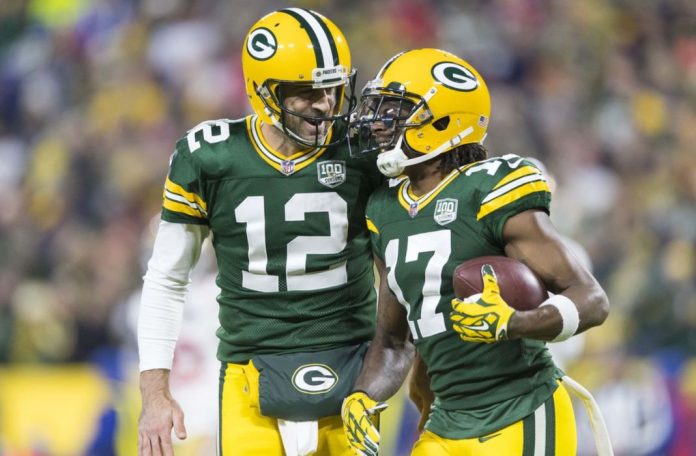Since the decline of the Jordy Nelson-Randall Cobb WR duo, the Packers’ front office has heard many questions. Former GM Ted Thompson received criticism from fans and analysts alike during the last few seasons of his tenure. Green Bay consistently refused to make moves in the free agent market. This left them out of one of the most important aspects of building a team.
Thompson was relieved of the GM position after 2017. Green Bay promoted from within, making former Director of player personnel Brian Gutekunst the new GM. They seemed to have completely changed their approach with a new guy in charge.

These are the “impact” free agent moves GB has made since Gutekunst’s hire:
- DL Muhammad Wilkerson one-year, $5 million.
- TE Jimmy Graham three-year, $30 million.
- CB Tramon Williams two-year, $10 million.
- OL Byron Bell one-year, $1.6 million.
- TE Marcedes Lewis one-year $2.1 million (’18), one-year $2.1 million (’19)
- S Adrian Amos four-year $37 million.
- LB Preston Smith four-year $52 million.
- DE Za’Darius Smith four-year $66 million.
Green Bay had holes at all of these positions, and Gutekunst and co. have gone out and filled them. They made cheap deals for positions of need like the ones for Wilkerson, Williams, and Bell. However, adding Amos, Preston Smith, and Za’Darius Smith this offseason are different deals. They paid these guys like top-of-the-market players.
Per Spotrac:
- Za’Darius Smith is now the fourth-highest paid OLB in the league.
- Amos is the seventh-highest paid free safety.
- Preston Smith is the eighth-highest paid OLB.
Now, these guys are solid players. They’re contributors, no doubt. However, they AREN’T worth these contracts. There’s a difference between signing impact free agents to big money deals and signing guys just for the sake of signing guys.
Either way, these moves improve the defense, and that’s something the Packers needed to do. At the same time, the offense needs just as much work. Last season, Green Bay jumped back up to 15th in points per game after a fall in 2017 that landed them at 20th. The thinking appears to be, if they improve the defense drastically, they should be able to win more games with a middle-of-the-road offense.
Is this a recipe for success? It seems unlikely. The winning formula over the last decade has mainly been dominated by teams taking advantage of rookie QB contracts while building up their defense (i.e. Seahawks, Ravens, and Eagles) or having a great offense and a solid defense (i.e. Patriots). The Broncos were able to win the way Green Bay is trying to build. They had Peyton Manning playing at the end of his career, but they had an ALL-TIME defense. That’s not really what I’m seeing in Green Bay.
Instead of adding average defensive pieces, they should focus on improving their offensive line. The group was, statistically, the third-worst in pass-protection, giving up 53 sacks last season. Or, maybe they could improve the RB situation. Last year, they ran for 1,667 yards as a team, 269 of which came from Rodgers.
The one positive on the Packers’ offense is their WR group and the potential they have. Davante Adams has turned into a legitimate threat, last season recording the seventh-most receiving yards (1,386) and the second-most receiving touchdowns (13). Behind him, Green Bay has promising young WRs in Geronimo Allison and Marquez Valdes-Scantling. If the trio can stay healthy and continue to build, they can be a strong trio in the NFL. Oh, and don’t forget they have Jimmy Graham at TE. While he’s not the dominant pass-catcher he once was, Graham still provides a good pair of hands and a big target for Rodgers.

While praise is deserved for this group, some criticism is also warranted. Their touchdown numbers were extremely low last season, obviously resulting in the drop in points per game. Graham, MVS, and Allison (along with now-former WR Randall Cobb) all contributed two receiving touchdowns each in 2018. Allison did miss most of the season with an injury, so he’s excused from the critique. This group needs to be better when it comes to getting into the end zone.
Could the money spent on the defensive acquisitions have been better spent on some of the offensive issues? Possibly. Maybe the addition of a young WR like Tyrell Williams could’ve helped, or, perhaps, they could’ve found some use in a RB like Mark Ingram. And, of the five positions on the line, three (LG, RG, and RT) could’ve been considered open for competition at the start of free agency. Plenty of capable guys were on the market.
AND, when it came time for the draft, the Packers found themselves getting TWO first round picks. Which, of course, they used to continue to bolster their defense. With the 12th pick (their original pick), they selected OLB Rashan Gary out of Michigan. Green Bay then traded their second first round pick (originally from the Saints) to Seattle. They moved up to 21st to select S Darnell Savage out of Maryland. Down the road, these guys could be great, and yes, technically they filled holes, but were they the most important ones?
Overall, in the 2019 draft, the Packers took two offensive players. In the second round, they took G Elgton Jenkins from Mississippi State, and they took TE Jace Sternberger from Texas A&M in the third. Jenkins hasn’t played guard consistently at the college level, so who knows how he transfers to the NFL. Sternberger was regarded as the fourth-or-fifth-best TE in a deep class for the position. His production may come after some development.
So, yes, the Packers are putting together a talented team slowly. However, they may be adding more talent on the wrong side of the ball and for more money than they’re worth. At 35, and after dealing with quite a few injuries in his career, Aaron Rodgers should be surrounded by offensive talent to make the most of his abilities. I’m afraid that, right now, the Packers aren’t doing that. At the end of the day, if Rodgers wins only one Super Bowl in his career, it will be the fault of the Packers organization and will be looked back on as one of the biggest “what-ifs” in sports.

